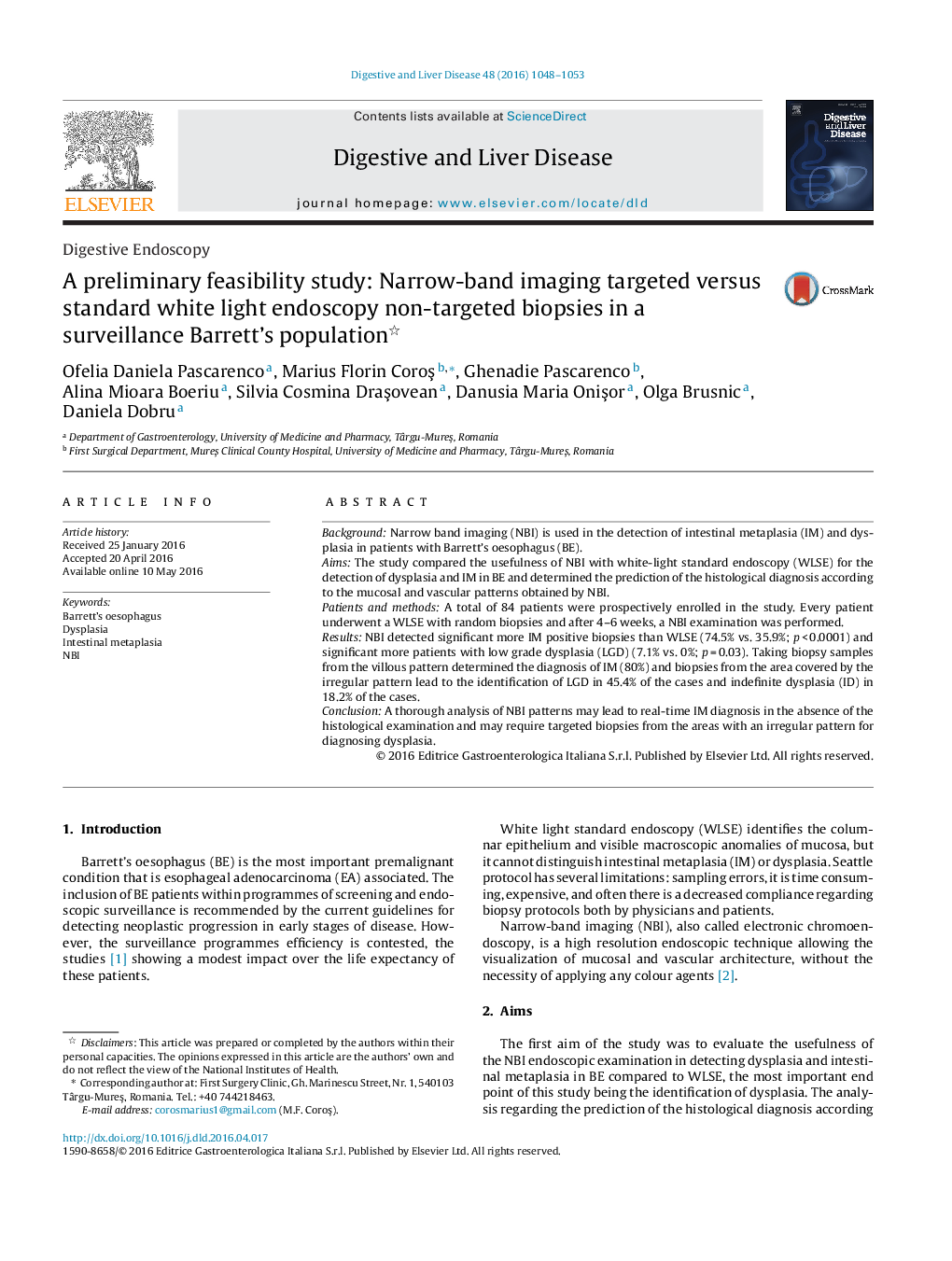| Article ID | Journal | Published Year | Pages | File Type |
|---|---|---|---|---|
| 3261188 | Digestive and Liver Disease | 2016 | 6 Pages |
BackgroundNarrow band imaging (NBI) is used in the detection of intestinal metaplasia (IM) and dysplasia in patients with Barrett's oesophagus (BE).AimsThe study compared the usefulness of NBI with white-light standard endoscopy (WLSE) for the detection of dysplasia and IM in BE and determined the prediction of the histological diagnosis according to the mucosal and vascular patterns obtained by NBI.Patients and methodsA total of 84 patients were prospectively enrolled in the study. Every patient underwent a WLSE with random biopsies and after 4–6 weeks, a NBI examination was performed.ResultsNBI detected significant more IM positive biopsies than WLSE (74.5% vs. 35.9%; p < 0.0001) and significant more patients with low grade dysplasia (LGD) (7.1% vs. 0%; p = 0.03). Taking biopsy samples from the villous pattern determined the diagnosis of IM (80%) and biopsies from the area covered by the irregular pattern lead to the identification of LGD in 45.4% of the cases and indefinite dysplasia (ID) in 18.2% of the cases.ConclusionA thorough analysis of NBI patterns may lead to real-time IM diagnosis in the absence of the histological examination and may require targeted biopsies from the areas with an irregular pattern for diagnosing dysplasia.
